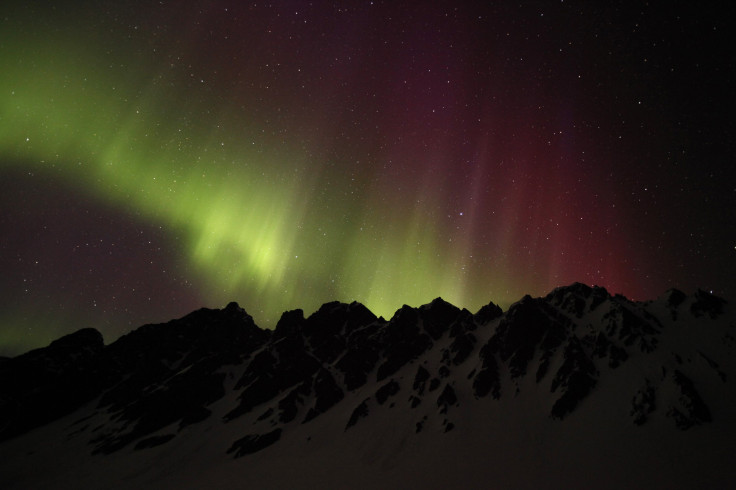'Strong' Geomagnetic Storm Alert Raised; Auroras May Light Up US Skies
KEY POINTS
- A "strong" geomagnetic storm watch has been issued for Thursday
- There are also geomagnetic storm alerts for Wednesday and Friday
- "Aurora may be visible over the northern tier states if the conditions are favorable," the SWPC noted
Several geomagnetic storm alerts are in place for the coming days, with a "strong" alert issued for Thursday. The space weather events may also cause aurora borealis to be visible in parts of the U.S.
A solar flare that erupted on the sun Monday resulted in coronal mass ejections that are now headed for the Earth, the National Oceanic and Atmospheric Administration's (NOAA) Space Weather Prediction Center (SWPC) noted. Now, the agency has issued a G3 geomagnetic storm alert for Thursday.
A G3 on the geomagnetic storm scale indicates a "strong" event, wherein power systems may require voltage corrections and even spacecraft operations may be affected. It may also impact systems such as low-frequency radio navigation, while aurora borealis sightings may be pushed as far down as Illinois and Oregon, according to the SWPC.
"Impacts to technology from a G3 storm generally remain small, but it can drive the aurora further equatorward of its polar home," the SPWC noted. "Aurora may be visible over the northern tier states if the conditions are favorable."
Apart from the G3 alert for Thursday, there is also a G1 (Minor) watch in effect for Wednesday and a G2 (Moderate) alert for Friday "in anticipation of continuing, but weakening, CME influences." Although both G1 and G2 are somewhat weaker compared to a G3 on the geomagnetic storm scale from G1 to G5, these may already have effects. Even at a G1, for instance, migratory animals may already be affected, and the aurora may be visible in Maine and northern Michigan.
G3 Watch now out for 31 March due to combined CME effects. Also, a G1 Watch is in place for 30 Mar due to CME shock arrival and a G2 Watch for 1 Apr due to lingering CME influences. Visit https://t.co/4CNTc1qJlT for latest info and https://t.co/PuIgIldyfa for story. @NWS @NOAA pic.twitter.com/ftMJaqgfjU
— NOAA Space Weather (@NWSSWPC) March 29, 2022
For those who would like to catch a glimpse of the possible aurora, SpaceWeather.com recommends that skywatchers in North America be alert for auroras after nightfall Wednesday. This would be in the hours before dawn Thursday for those in Europe.
"When chasing auroras, dark skies are essential; go to the countryside," the outlet noted. "Urban glare can overwhelm auroras even during a strong geomagnetic storm."
Due to the G3 geomagnetic storm alert, along with the other weather conditions that may impact the U.S. this week such as "critical fire weather conditions" and "severe thunderstorm threats with tornadoes and wind," the National Weather Service (NWS) has declared a Critical Weather Day Status from Tuesday to Saturday.
As the SWPC explained, although such geomagnetic storms create beautiful auroras, they can disrupt important systems such as GPS, power grids and pipelines. This is why experts continue to study space weather and its possible effects on the planet.

© Copyright IBTimes 2025. All rights reserved.






















